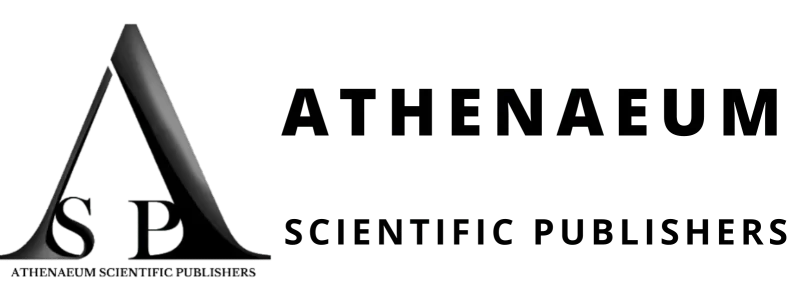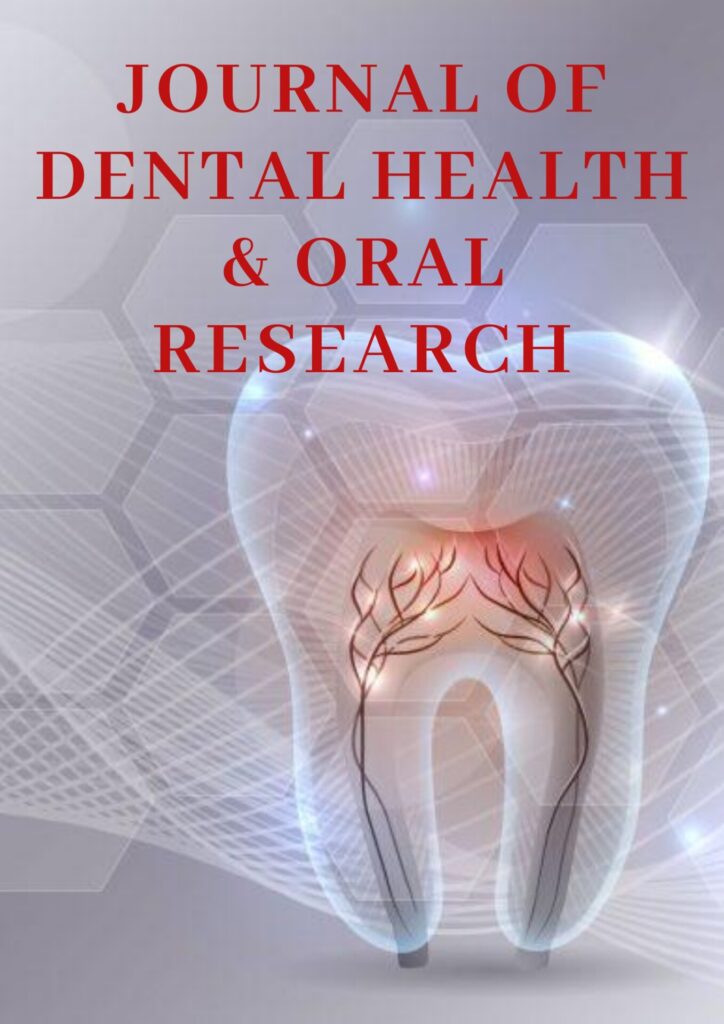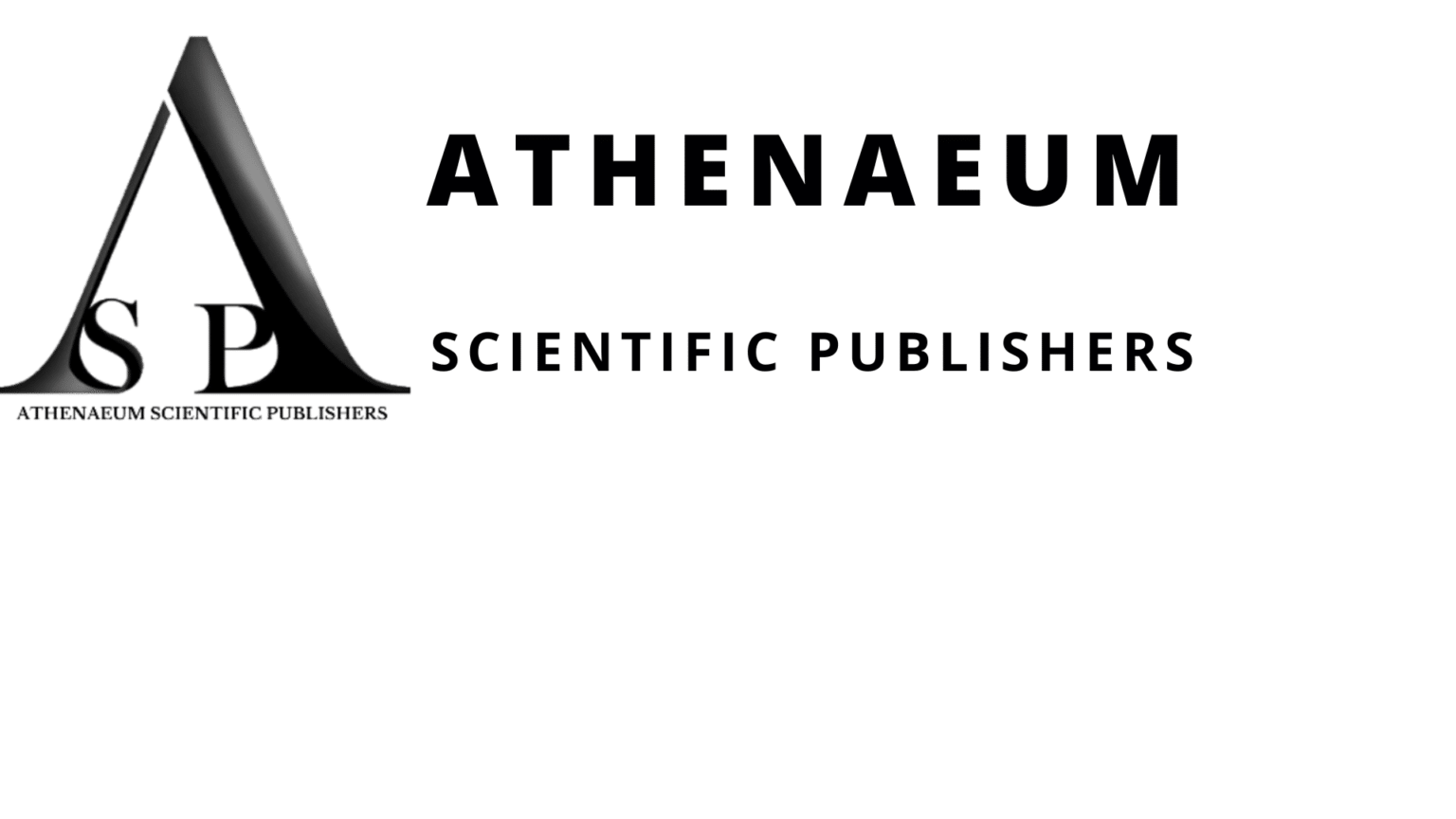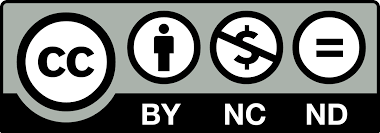Review Article | Vol. 6, Issue 1 | Journal of Dental Health and Oral Research | Open Access |
Comparison of Bond Strength Among Three Direct Bonding Systems for Metal Brackets in Orthodontics: A Systematic Review and Meta-Analysis
Edgar Ramón Nevárez Sánchez1*, Humberto Alejandro Monreal Romero2, Alfredo Nevárez Rascón3
1Master in Stomatology with specialization in Orthodontics, Professor at Faculty of Dentistry, Autonomous University of Chihuahua, Chihuahua, Mexico
2PhD in Materials Science, Professor at Faculty of Dentistry, Autonomous University of Chihuahua, Chihuahua, Mexico
3PhD in Dental Research, Professor at Faculty of Dentistry, Autonomous University of Chihuahua, Chihuahua, México
*Correspondence author: Edgar Ramón Nevárez Sánchez, Master in Stomatology with specialization in Orthodontics, Professor at Faculty of Dentistry, Autonomous University of Chihuahua, Chihuahua, Mexico; E-mail: [email protected]
Citation: Sánchez ERN, et al. Comparison of Bond Strength Among Three Direct Bonding Systems for Metal Brackets in Orthodontics: A Systematic Review and Meta-Analysis. J Dental Health Oral Res. 2025;6(1):1-22.
Copyright© 2025 by Sánchez ERN, et al. All rights reserved. This is an open access article distributed under the terms of the Creative Commons Attribution License, which permits unrestricted use, distribution, and reproduction in any medium, provided the original author and source are credited.
| Received 03 March, 2025 | Accepted 24 March, 2025 | Published 31 March, 2025 |
Abstract
Background: Direct bonding of metal brackets is a fundamental procedure in orthodontics and the bonding efficacy of the system employed is critical for treatment success. There are three main types of adhesive systems: etch-and-rinse, self-etching and universal. However, there is no consensus in the current literature on which of these systems provides the highest adhesive strength, justifying this review to guide clinical selection based on updated evidence.
Methods and findings: A comprehensive search was conducted in databases including PubMed, Cochrane Library, Science Direct and Google Scholar, including studies published from 2014 onwards. Search strategies were developed using specific terms related to orthodontic bonding and types of adhesive systems.
The inclusion criteria were in-vivo and in-vitro randomized controlled studies that evaluated the shear bond strength of adhesive systems in metal brackets. Studies had to be published in English or Spanish from 2014 onwards and with a sound methodology and low risk of bias. Studies with a high risk of bias, those not relevant to the objective or with differing methodological designs were excluded.
The methodological quality of the studies was assessed using the Cochrane Collaboration’s risk of bias tool. Data on bond strength, type of adhesive system and tooth characteristics were collected. Meta-analyses were performed using RevMan Web, generating forest plots and evaluating heterogeneity with the I² statistic. SPSS was employed to identify potential publication bias.
Etch-and-rinse systems demonstrated the highest bond strength compared to self-etching systems, which were advantageous in reducing clinical time. Universal adhesives demonstrated comparable bond strength to conventional systems when combined with acid pre-etching. Variability in results indicating that factors such as application technique and substrate conditions (e.g., moisture and enamel quality) influence adhesive effectiveness.
Conclusion: Etch-and-rinse systems provide the greatest bond strength, but universal adhesives offer a versatile and clinically favorable option when balancing efficacy and simplicity. The high heterogeneity among studies and variability in protocols limit the generalizability of the results. Additionally, the predominance of in-vitro trials may not fully reflect clinical conditions.
Orthodontists should select the adhesive system based on the specific characteristics of each case and clinical technique. This review contributes valuable information for clinical decision-making in orthodontics, supporting the selection of the most suitable adhesive system to enhance treatment outcomes and patient satisfaction.
Keywords: Etch and Rinse; Self-Etch; Universal; Metal Brackets; Bond Strength
Introduction
Orthodontics is a specialized field of dentistry focused on achieving dentofacial harmony through the alignment and movement of teeth, thereby improving both aesthetics and masticatory function. One of the essential procedures in orthodontic treatment is the direct bonding of brackets, in which small metallic components are adhered to the tooth surface and subsequently connected by archwires that generate the necessary forces for tooth movement [1]. The success of orthodontic treatment depends significantly on the strength of the bracket-tooth bond, as insufficient adhesion can lead to bracket debonding, patient discomfort, treatment delays and increased clinical costs [2].
Various adhesive systems are available for bonding metallic brackets, each with distinct advantages and limitations. The choice of the most suitable adhesive system depends on various factors, including the clinician’s expertise, bracket type, tooth characteristics and patient preference [3]. Conventional etch-and-rinse adhesive systems involve an acid-etching step followed by rinsing, creating a microporous enamel surface that enhances adhesive penetration and bond strength [4]. However, this technique is technique-sensitive and requires precise handling to avoid enamel damage. In contrast, self-etch adhesive systems simplify the bonding procedure by combining etching and priming in a single step, eliminating the need for separate acid etching [5]. This simplification reduces chair time and technique sensitivity, but some studies suggest that self-etch systems may provide lower bond strength compared to etch-and-rinse adhesives [6]. More recently, universal adhesive systems have gained popularity due to their versatility and ease of application, demonstrating bond strengths comparable to or even superior to conventional adhesives, though long-term evidence is still needed [7].
Despite the diversity of adhesive systems, no consensus exists regarding which offers the highest bond strength for direct bracket bonding. While some studies suggest that etch-and-rinse systems yield the strongest adhesion, others indicate that self-etch or universal adhesives are equally effective or superior [8]. These inconsistencies in the literature highlight the need for a systematic review to compare the available scientific evidence on the adhesive strength of etch-and-rinse, self-etch and universal adhesive systems in direct bracket bonding. This study aims to provide orthodontists with evidence-based insights to optimize adhesive selection, enhance treatment outcomes and improve patient experience. By critically evaluating the literature and identifying trends in adhesive performance, this review will contribute to a deeper understanding of adhesive systems in orthodontics. The findings will offer valuable guidance for clinical decision-making and future research, ensuring that orthodontic treatments continue to evolve based on robust scientific evidence.
Ethics Approval
This study was approved by the Ethics Committee of Navodaya Dental College and Hospital, Raichur (IEC/NDC/RCR/2023-2024/SSO025).
Methodology
This research consisted of a systematic review and meta-analysis of Randomized Controlled Trials (RCTs) evaluating adhesive systems used for the direct bonding of metal brackets. The PRISMA 2020 guidelines were followed to ensure a rigorous and reproducible selection of studies. The PICO strategy (Population, Intervention, Comparison, Outcome) was used to define the scope of the review and structure the bibliographic search.
PICO Strategy:
Population (P): Teeth with metallic brackets bonded using a conventional, self-etching or universal adhesive system.
Intervention (I): Direct bonding system for metallic brackets.
Comparison (C): Comparison of different bonding systems (conventional, self-etching and universal) for direct bonding of metallic brackets.
Outcome (O): Identify which bonding system is the most suitable for the direct bonding of metallic brackets.
Research Question
Which bonding system exhibits the highest bond strength in the direct bonding of metallic brackets?
Information Sources and Search Strategy
A systematic search was conducted in PubMed, Cochrane Library, Science Direct and Google Scholar on June 17, 2024. MeSH terms and Boolean operators were used with the following search strategy: “Bond strength and orthodontic brackets and self-etching adhesives or conventional adhesives or universal adhesives.” No restrictions were applied to maximize the retrieval of relevant studies.
Eligibility Criteria
RCTs published in English or Spanish from 2014 onwards were included, evaluating the adhesion of metal brackets using etch-and-rinse, self-etch or universal adhesive systems and reporting shear bond strength as the primary outcome. Studies with methodological designs other than RCTs, those not reporting shear bond strength as the primary variable, studies in other languages or those without an available abstract were excluded.
Study Selection and Data Extraction
Study selection followed a two phases process: 1, title and abstract screening to exclude irrelevant studies and 2, full-text reading of preselected studies to determine eligibility. The PRISMA tool was used to document the selection process. Data extraction was performed in Microsoft Excel using a structured form, recording the author, year of publication, study design, type of adhesive system, comparison group, evaluation method and main results. A second reviewer verified the accuracy of the extraction.
Risk of Bias Assessment
The methodological quality of the included studies was assessed using the “Cochrane Collaboration’s Risk of Bias Tool,” which analyzes five domains: randomization, deviations from interventions, incomplete outcome data, outcome measurement and selective reporting. Studies were classified as having low, moderate or high risk of bias. In case of discrepancies, a third evaluator resolved disagreements.
Statistical Methods
Statistical analysis was performed using RevMan Web and SPSS v.29. Mean differences were calculated to evaluate shear bond strength among different adhesive systems. A random-effects model was used due to the expected heterogeneity among studies. Heterogeneity was assessed using the I² statistic and the Chi-square test. Publication bias was evaluated using funnel plots and Egger’s test. Confidence intervals of 95% were reported, avoiding the exclusive use of p-values to determine statistical significance.
Results
Study Selection and Risk of Bias Assessment
A total of 3,292 titles were identified from the database searches (Fig. 1). After removing 1,822 duplicate articles, 1,470 unique studies remained. A preliminary screening of titles and abstracts resulted in the selection of 272 studies that met basic relevance criteria. However, 203 were excluded for being unrelated to the research topic, involving ceramic brackets or using rebonded brackets.
Of the 69 full-text articles assessed, 31 were excluded as they did not employ metal brackets or did not directly address the study objective. This resulted in 38 eligible studies. Using the Risk of Bias (RoB 2.0) tool, five studies were excluded due to high risk of bias, resulting in a final selection of 33 randomized clinical trials for the systematic review.
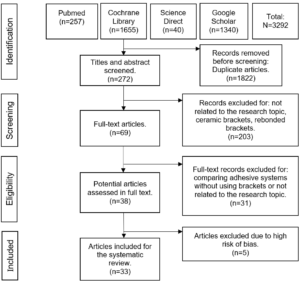
Figure 1: PRISMA flow diagram.
Out of the 33 included studies, five had a low risk of bias, whereas the remaining 28 had “some concerns.” Of these, four were in-vivo trials and 29 were in-vitro studies.
Comparison of Adhesive Systems
Of the 33 included studies, 30 evaluated shear bond strength, while three investigated the percentage of bracket debonding. Regarding sample type, 29 studies used human teeth, whereas four used bovine teeth (Table 1).
Author/Year | Study Design | Type and Number of Teeth | Adhesive System | Evaluated Groups | Assessment Method | Results |
Lahcen Ousehal 2016(9) | RCT (in-vivo) | 400 premolars | Etch and rinse vs self-etching | 100 patients, brackets were cemented on teeth 14 and 25 with self-etching adhesive and on teeth 15 and 24 with conventional adhesive. | Percentage of brackets debonding | There was no significant difference. |
Mete Ozer 2014(10) | RCT (in-vivo) | 1140 teeth | Etch and rinse vs self-etching | 57 patients, for each patient, brackets were cemented using both the conventional system and the self-etching system alternately by quadrant. | Percentage of brackets debonding | There was no significant difference. |
Shaza M. Hammad 2016(11) | RCT (in-vitro) | 96 premolars | Etch and rinse vs self-etching vs Universal (passive) | Four randomly assigned groups | Shear bond strength (Sbs/Mpa) | There was no significant difference at 12 hours. |
Qasim Khalid 2023(12) | RCT (in-vitro) | 60 premolars | Etch and rinse vs Universal (passive) | Two randomly assigned groups: | Shear bond strength (Sbs/Mpa) | The mean SBS of universal adhesives was statistically higher compared to that of conventional adhesives. |
Andreas Hellak 2016(13) | RCT (in-vitro) | 60 premolars | Etch and rinse vs self-etching vs Universal (passive) | Three randomly assigned groups: | Shear bond strength (Sbs/Mpa) | There was no significant difference. |
Ines Dallel 2019(14) | RCT (in-vitro) | 120 premolars | Etch and rinse vs self-etching | Four randomly assigned groups: | Shear bond strength (Sbs/Mpa) | The mean SBS of conventional adhesives was statistically higher compared to that of self-etch adhesives. |
Alexandra R. Vinagre 2014(15) | RCT (in-vitro) | 90 premolars 180 Hemi premolars | Etch and rinse vs self-etching | Four randomly assigned groups: | Shear bond strength (Sbs/Mpa) | There was no significant difference. |
Emire Aybüke Erdur 2017(16) | RCT (in-vitro) | 100 mandibular third molars | Etch and rinse vs self-etching | Five randomly assigned groups. In all groups, the mesiobuccal and distobuccal surfaces were randomized: one received the experimental adhesive, while the other received the control adhesive. The control adhesive was Transbond XT with 37% phosphoric acid for 15s. Group 1: n=20 brackets bonded with Transbond Plus SEP. | Shear bond strength (Sbs/Mpa) | The mean SBS of conventional adhesives was statistically higher in all groups compared to that of self-etch adhesives. |
Mukundan Vijayan 2023(17) | RCT (in-vitro) | 20 premolars | Etch and rinse vs self-etching | Two randomly assigned groups: | Shear bond strength (Sbs/Mpa) | The mean SBS of conventional adhesives was statistically higher compared to that of self-etch adhesives. |
Elsanuse Saied 2021(18) | RCT (in-vitro) | 30 premolars | Etch and rinse vs self-etching | Two randomly assigned groups: | Shear bond strength (Sbs/Mpa) | There was no significant difference at 24 hours and 30 days. |
Nasrin Farhadian 2019(19) | RCT (in-vivo) | 22 patients 44 premolars | Etch and rinse vs self-etching | 22 patients, with brackets bonded using the conventional system and the self-etch system alternately by quadrant for each patient. Two months later, the premolars were extracted. | Shear bond strength (Sbs/Mpa) | There was no significant difference. |
May Anny Alves 2021(20) | RCT (in-vitro) | 80 bovine incisors | Etch and rinse vs self-etching vs Universal (passive) | Four randomly assigned groups: | Shear bond strength (Sbs/Mpa) | The mean SBS of conventional and self-etch adhesives was higher compared to that of universal adhesives. |
M. J. Ravindranath 2015(21) | RCT (in-vitro) | 60 premolars | Etch and rinse vs self-etching | Three randomly assigned groups: | Shear bond strength (Sbs/Mpa) | The mean SBS of conventional adhesives etched for 30s with 37% phosphoric acid was higher than that of self-etch adhesives and conventional adhesives etched for 15s. |
Sudhir Sharma 2014(22) | RCT (in-vitro) | 80 premolars | Etch and rinse vs self-etching | Four randomly assigned groups: | Shear bond strength (Sbs/Mpa) | The mean SBS of conventional adhesives was higher compared to that of self-etch adhesives. |
Aman Sachdeva 2017(23) | RCT (in-vitro) | 150 premolars | Etch and rinse vs self-etching | Three randomly assigned groups: | Shear bond strength (Sbs/Mpa) | The mean SBS of conventional adhesives was statistically higher compared to that of Transbond Plus, but no significant difference was found with G-Bond. |
Ezgi Atik 2018(24) | RCT (in-vivo) | 63 patients, full arches 1260 teeth | Etch and rinse vs self-etching | Four randomly assigned groups: | Percentage of brackets debonding | There was no significant difference. |
Handan Bayar Bilen 2020(25) | RCT (in-vitro) | 144 premolars | Etch and rinse vs self-etching | Six randomly assigned groups: | Shear bond strength (Sbs/Mpa) | There was no significant difference. |
Bhogi Siddarth 2022(26) | RCT (in-vitro) | 100 premolars | Etch and rinse vs self-etching | Two randomly assigned groups: | Shear bond strength (Sbs/Mpa) | There was no significant difference. |
Shaheen Hamdani 2016(27) | RCT (in-vitro) | 200 premolars | Self-etching Vs self-etching (active) | Four randomly assigned groups: | Shear bond strength (Sbs/Mpa) | The mean SBS for the self-etch adhesive conditioned with 37% phosphoric acid for 10s was statistically higher compared to that of the self-etch adhesives that were either not conditioned or conditioned for 30s and 60s. |
Kartikaya Verma 2019(28) | RCT (in-vitro) | 80 premolars | Etch and rinse vs self-etching | Four randomly assigned groups: | Shear bond strength (Sbs/Mpa) | The mean SBS for the conventional adhesive was statistically higher compared to that of the self-etch adhesives. |
Junaid Ahmed 2018(29) | RCT (in-vitro) | 100 premolars | Etch and rinse vs self-etching (active) | Four randomly assigned groups: | Shear bond strength (Sbs/Mpa) | There was no significant difference; Transbond Plus performed better in a wet environment than the conventional adhesive. |
Nishad A Vaheed 2018(30) | RCT (in-vitro) | 60 premolars | Etch and rinse vs self-etching | Three randomly assigned groups: | Shear bond strength (Sbs/Mpa) | The mean SBS for the self-etch adhesive (7th) was statistically higher compared to that of the conventional adhesive. |
Amit Zope 2016(6) | RCT (in-vitro) | 100 premolars | Etch and rinse vs self-etching | Five randomly assigned groups: | Shear bond strength (Sbs/Mpa) | The mean SBS for the conventional adhesives was statistically higher compared to that of the self-etch adhesives. |
Isabella-Saraiva 2023(31) | RCT (in-vitro) | 100 bovine incisors | Etch and rinse Vs Universal (active) | Five randomly assigned groups: | Shear bond strength (Sbs/Mpa) | After 24 hours, there were no significant differences. |
Chandrashekhar Yadala 2015(32) | RCT (in-vitro) | 60 premolars | Etch and rinse vs self-etching | Four randomly assigned groups: | Shear bond strength (Sbs/Mpa) | There was no significant difference. |
Angelica Iglesias 2020(33) | RCT (in-vitro) | 72 premolars | Etch and rinse vs self-etching | Six randomly assigned groups: | Shear bond strength (Sbs/Mpa) | The mean SBS for the conventional adhesives was statistically higher compared to that of the self-etch adhesives. |
Senkutvan Rathnam 2014(34) | RCT (in-vitro) | 36 premolars | Etch and rinse vs self-etching vs Universal (active) | Three randomly assigned groups: | Shear bond strength (Sbs/Mpa) | There was no significant difference. |
Muhittin Ugurlu 2021(35) | RCT (in-vitro) | 75 premolars | Etch and rinse vs Universal (active) | Five randomly assigned groups: | Shear bond strength (Sbs/Mpa) | The average SBS of the Scotchbond Universal adhesive was statistically higher compared to the conventional adhesives and the Prime&Bond Universal adhesive. |
Michael Schauseil 2016(13) | RCT (in-vitro) | 32 bovine incisors | Etch and rinse vs self-etching | Two groups were randomly assigned: | Shear bond strength (Sbs/Mpa) | There was no significant difference. |
Julia H. Seeliger 2017(36) | RCT (in-vitro) | 40 bovine incisors | Etch and rinse vs self-etching | Four groups were randomly assigned: | Shear bond strength (Sbs/Mpa) | There was no significant difference. |
Fereshteh Shafiei 2019(37) | RCT (in-vitro) | 84 premolars | Etch and rinse Vs Universal (active y passive) | Seven randomly assigned groups: | Shear bond strength (Sbs/Mpa) | The mean SBS for active universal adhesives (5, 10 and 15s) was statistically higher compared to that of conventional adhesives. |
George Sam 2021(38) | RCT (in-vitro) | 60 premolars | Etch and rinse vs self-etching | Three groups were randomly assigned: | Shear bond strength (Sbs/Mpa) | The mean SBS for conventional adhesives was statistically higher compared to self-etching adhesives. |
Aslıhan Zeynep Oz 2018(39) | RCT (in-vitro) | 68 premolars | Etch and rinse vs self-etching Vs Universal (active and passive) | Four groups were randomly assigned: Group 1 (n=16) consisted of brackets cemented with Transbond XT and 37% Phosphoric Acid for 10s, Group 2 (n=16) consisted of brackets cemented with Transbond Plus, Group 3 (n=16) consisted of brackets cemented with Clearfil Universal Bond and 37% Phosphoric Acid for 10s and Group 4 (n=16) consisted of brackets cemented with Clearfil Universal Bond (passive). | Shear bond strength (Sbs/Mpa) | There was no significant difference. |
Table 1: Characteristics of the included studies.
A total of 28 comparisons between conventional and self-etch adhesive systems were reported. Of these:
- Eleven studies indicated that the conventional system had superior adhesion
- One study favored the self-etch system
- Sixteen studies found no statistically significant differences
For the nine comparisons between conventional and universal adhesive systems:
- One study showed superior adhesion for the conventional system
- Four studies favored the universal system
- Four studies reported no statistically significant differences
For the five comparisons between self-etch and universal adhesive systems:
- One study favored the self-etch system
- Four studies found no statistically significant differences
Meta-Analysis
A meta-analysis was conducted to quantitatively analyze the data. The primary comparison focused on shear bond strength in brackets bonded with conventional and self-etch adhesives. A total of 24 randomized controlled trials were included, with 22 conducted on human teeth and two on bovine teeth (Fig. 2).
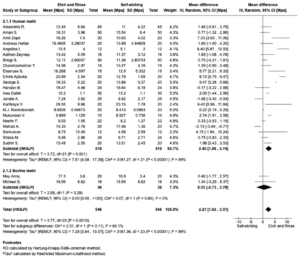
Figure 2: Summary of findings from the meta-analysis: Etch and Rinse vs. Self-etching adhesives.
The results indicate that conventional adhesive systems exhibit significantly higher bond strength (2.27 MPa, 95% CI: 1.02-3.51) compared to self-etch systems (P=0.001). Sensitivity analysis confirmed the robustness of the findings, as the exclusion of individual studies did not alter statistical significance (P<0.05). However, substantial heterogeneity was observed (I2=99), likely due to differences in adhesive brands and tooth characteristics among the studies.
Publication bias assessment using a funnel plot revealed asymmetry, suggesting potential underreporting of negative or non-significant results. Egger’s regression test showed no statistically significant evidence of publication bias (P = 0.285), indicating that the findings should be interpreted with caution.
A comparative meta-analysis of nine trials (seven on human teeth, two on bovine teeth) was conducted to evaluate shear bond strength between conventional and universal adhesives. The overall effect size was not statistically significant (P = 0.33), with high heterogeneity (I² = 97% for human teeth, I² = 96% for bovine teeth), suggesting similar performance between these adhesive systems (Fig. 3).
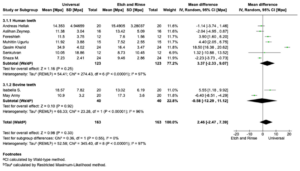
Figure 3: Summary of findings from the meta-analysis: Universal vs Etch and Rinse adhesives.
Additionally, a meta-analysis of four studies comparing self-etch and universal adhesives revealed no statistically significant difference in bond strength (difference of means: 0.75 MPa; 95% CI: -0.34 to 1.84; P = 0.18). Sensitivity analysis confirmed the consistency of results, with no significant impact observed upon study exclusion (Fig. 4).

Figure 4: Summary of findings from the meta-analysis: Universal vs Self-etching adhesives.
A final meta-analysis of three in-vivo trials compared bracket debonding rates between conventional and self-etching adhesives. No significant differences were found in clinical failure rates. Sensitivity and heterogeneity assessments confirmed the reliability of these findings (Fig. 5).

Figure 5: Summary of findings from the meta-analysis comparing brackets debonding rates between etch and rinse and self-etching adhesive systems.
The systematic review and meta-analysis indicate that conventional adhesive systems generally demonstrate superior shear bond strength compared to self-etch adhesives. However, comparisons between conventional and universal adhesives, as well as between self-etch and universal adhesives, yielded no significant differences. The overall quality of the included studies was moderate, with considerable heterogeneity observed in meta-analyses. Further research with standardized methodologies is recommended to validate these findings.
Discussion
This systematic review and meta-analysis compared the adhesive effectiveness of conventional, self-etch and universal bonding systems for the direct bonding of metal brackets. Our findings indicate that conventional adhesive systems, employing etch-and-rinse techniques, demonstrated significantly higher shear bond strength compared to self-etch adhesives. Universal adhesives, when used with a total-etch approach, exhibited comparable performance to conventional systems, whereas their self-etch mode resulted in lower bond strength. These results suggest that etch-and-rinse systems remain the gold standard in achieving optimal adhesion in orthodontic treatments.
The findings of this review are clinically relevant as they provide evidence-based insights into the selection of adhesive systems for direct bracket bonding. The superior performance of etch-and-rinse adhesives suggests their continued use in cases requiring maximum bond strength. Universal adhesives offer versatility and ease of application, making them a promising alternative when used with prior acid etching. Self-etch adhesives simplify the bonding process; however, they may not always achieve adequate bond strength, particularly in highly mineralized enamel. It is important to interpret these findings with caution given that the majority of included studies were in-vitro, which may not fully reflect intraoral conditions.
Strengths and Limitations
Strengths
- The systematic review adhered to PRISMA guidelines, ensuring methodological rigor and transparent reporting
- The inclusion of randomized controlled trials enhances the reliability of the findings
- The study applied advanced statistical techniques, including meta-analysis, sensitivity analysis and heterogeneity assessment, strengthening the robustness of the conclusions
Limitations
- A significant proportion of the included studies were in-vitro, which may not fully capture intraoral conditions such as moisture, salivary enzymes and patient variability
- Considerable heterogeneity was observed in the included studies, likely due to variations in adhesive brands, application techniques and sample types
Implications for Existing Knowledge
These findings reinforce existing evidence that etch-and-rinse systems provide the highest bond strength, particularly in high-demand orthodontic applications. The study also highlights the growing relevance of universal adhesives, which, when applied with a selective-etch approach, can achieve bond strengths comparable to conventional adhesives. However, the results challenge the assumption that self-etch adhesives can fully replace conventional systems, emphasizing the need for careful adhesive selection based on clinical requirements.
Future Research Directions
- Clinical Trials: Future research should focus on well-designed clinical trials comparing adhesive performance in real-world conditions to account for factors like salivary contamination and enamel variations
- Longitudinal Studies: Investigations assessing long-term bracket retention and failure rates in different adhesive systems could provide a better understanding of their durability
- Material Innovations: Research into novel adhesive formulations that enhance self-etch performance while maintaining simplicity of application could bridge the gap between etch-and-rinse and self-etch systems
- Subgroup Analyses: Further studies should explore adhesive effectiveness in specific patient populations, such as those with fluorotic enamel or younger patients with immature enamel
Conclusion
This study confirms that etch-and-rinse adhesives remain the most effective for direct bracket bonding, while universal adhesives represent a viable alternative when used with prior acid etching. Self-etch adhesives, despite their ease of use, generally result in lower bond strengths, limiting their application in high-demand clinical scenarios. Future research should focus on validating these findings through clinical trials and exploring innovations to enhance adhesive performance across all systems.
Conflict of Interest
The authors have no conflict of interest to declare.
Funding
This research did not receive any specific grant from funding agencies in the public, commercial or not-for-profit sectors.
Reference
- Powers JM, Kim HB, Turner DS. Orthodontic adhesives and bond strength testing. In: Quintessence Publishing. Chicago; 1997;147-56.
- Gange P. The evolution of bonding in orthodontics. American J Orthodontics and Dentofacial Orthopedics. 2015;147(4):S56-63.
- Sato T, Takagaki T, Hatayama T, Nikaido T, Tagami J. Update on enamel bonding strategies. Frontiers in Dental Medicine. 2021;2:1-10.
- Buonocore MG. A simple method of increasing the adhesion of acrylic filling materials to enamel surfaces. J Dent Res. 1955;34(6):849-53.
- Van Meerbeek B, Yoshihara K, Yoshida Y, Mine A, De Munck J, Van Landuyt KL. State of the art of self-etch adhesives. Dental Materials. 2011;27(1):17-28.
- Zope A, Zope-Khalekar Y, Chitko SS, Kerudi VV, Patil HA, Bonde PV, et al. Comparison of self-etch primers with conventional acid etching system on orthodontic brackets. J Clinical and Diagnostic Research. 2016;10(12):ZC19-22.
- Gaete M, Cabrera L. Los adhesivos universales: Innovación en la odontología adhesiva. Dental Tribune Latin America. 2023;3:25-30.
- Moncada G, García Fonseca R, de Oliveira OB, Fernández E, Martín J, Vildósola P. Rol del 10-metacriloxidecilfosfato dihidrogenado en el cambio de paradigma de los sistemas adhesivos integrados en la dentina. Revista Clínica de Periodoncia, Implantología y Rehabilitación Oral. 2014;7(3):194-9.
- Ousehal L, El Aouame A, Rachdy Z, Benkiran G. Comparison of the efficacy of a conventional primer and a self-etching primer. Int Orthod. 2016;14(2):195-205.
- Ozer M, Bayram M, Dincyurek C, Tokalak F. Clinical bond failure rates of adhesive precoated self-ligating brackets using a self-etching primer. Angle Orthodontist. 2014;84(1):155-60.
- Hammad SM, El-Wassefy N, Maher A, Fawakerji SM. Effect of nanotechnology in self-etch bonding systems on the shear bond strength of stainless-steel orthodontic brackets. Dental Press J Orthod. 2017;22(1):47-56.
- Khalid Q, Rahbar MI, Chaudhry NA, Riaz A, Aziz A, Ata S. Comparison of shear bond strength of orthodontic brackets with fifth and eighth generation adhesive systems. Pakistan Journal of Medical and Health Sciences. 2023;17(1):452-4.
- Schauseil M, Blöcher S, Hellak A, Roggendorf MJ, Stein S, Korbmacher-Steiner H. Shear bond strength and debonding characteristics of a new premixed self-etching with a reference total-etch adhesive. Head Face Med. 2016;12(1):25.
- Dallel I, Lahwar S, Jerbi MA, Tobji S, Ben Amor A, Kassab A. Impact of adhesive system generation and light curing units on orthodontic bonding: In-vitro study. Int Orthod. 2019;17(4):799-805.
- Vinagre AR, Messias AL, Gomes MA, Costa AL, Ramos JC. Effect of time on shear bond strength of four orthodontic adhesive systems. Revista Portuguesa de Estomatologia, Medicina Dentaria e Cirurgia Maxilofacial. 2014;55(3):142-51.
- Erdur EA, Yildirim M, Akin M. Comparison of using self etch adhesive system in orthodontic bracket bonding procedures. Selcuk Dental Journal. 2017;4:1-7.
- Vijayan M, Rajendran R. Comparison of shear bond strength of orthodontic brackets bond with self-etching primer adhesive systems against conventional acid etching technique: An in-vitro study. Int J Acad Medicine and Pharm. 2023;(3):146-9.
- Abdelmegeed ES. Effect of etching techniques on the shear bond strength of adhesive precoated brackets bonded in-vitro. J Applied Science. 2021;(6):1-12.
- Farhadian N, Miresmaeili A, Zandi VS. Shear bond strength of brackets bonded with self-etching primers compared to conventional acid-etch technique: A randomized clinical trial. Front Dent. 2019;16(4):248-55.
- Fraga MAA, Laignier DFRK de S, Garfias CSY, Correr AB, Teixeira LP, Malacarne-Zanon J. Effect of extended application time of universal adhesives on bond strength of brackets and enamel integrity. Research, Society and Development. 2021;10(13):1-10.
- Ravindranath MJ, Mahendra L, Rajasigamani K, Kumaran K. Comparison of morphological variation and shear bond strength between conventional acid etchant at different etch times and self-etching primer-an in-vitro study. International Journal of Pharma Medicine and Biological Sciences. 2015;4(1):11-4.
- Sharma S, Tandon P, Nagar A, Singh GP, Singh A, Chugh VK. A comparison of shear bond strength of orthodontic brackets bonded with four different orthodontic adhesives. J Orthod Sci. 2014;3(2):29-33.
- Sachdeva A, Raghav S, Goel M, Raghav N, Tiwari S. A comparison of the shear bond strength of conventional acid etching, self-etching primer and single bottle self-adhesive: An in-vitro study. Ind J Dental Sciences. 2017;9(3):170-5.
- Atik E, Gorucu-Coskuner H, Taner T. Clinical performance of precoated brackets and self-etch bonding technique: A prospective comparative study. Clin Oral Investig. 2019;23(6):2813-21.
- Bayar Bilen H, Çokakoğlu S. Effects of one-step orthodontic adhesive on microleakage and bracket bond strength: An in-vitro comparative study. Int Orthod. 2020;18(2):366-73.
- Siddarth B, Aileni KR, Rachala MR, Dasari AK, Mallepally JP, Thadisina PR, et al. Comparative evaluation and influence of new Optibond eXTRa self-etch Universal adhesive and conventional Transbond XT on shear bond strength of orthodontic brackets: An in-vitro study. J Orthod Sci. 2022;11(1):43.
- Hamdani S, Anita G, Sodawala J, Gandhi S, Ali SM. The effect of pre-etching with 37% orthophosphoric acid on the shear bond strength of orthodontic brackets bonded using self-etching primer-adhesive system. Ind J Dental Research. 2016;27(5):498-501.
- Verma K, Gandhi G, Upadhyay S, Phor D, Sharma J, Kathait P. Evaluation of shear bond strength and adhesive remnant index of four adhesive resin systems using metallic and ceramic brackets. IOSR J Dental and Medical Sciences. 2019;18(7):49-54.
- Shaik JA, Reddy RK, Bhagyalakshmi K, Shah MJ, Madhavi O, Ramesh SV. In-vitro evaluation of shear bond strength of orthodontic brackets bonded with different adhesives. Contemp Clin Dent. 2018;9(2):289-92.
- Vaheed NA, Gupta M, David SA, Sam G, Ramanna PK, Bhagvandas SC. In-vitro analysis of shear bond strength and adhesive remnant index of stainless steel brackets with different adhesive systems to enamel. J Contemporary Dental Practice. 2018;19(9):1047-51.
- Resende ISL de, Cunha DA, Silva PG de B, Damasceno JX, Aragão LR, Vieira-Meyer APGF, et al. Does the use of universal adhesive systems improve the durability of the bond strength of orthodontic brackets to enamel? J Clin Exp Dent. 2024;16(2):e178-85.
- Yadala C, Gaddam R, Arya S, Baburamreddy K V, Ramakrishnam Raju V, et al. Comparison of shear bond strength of three self-etching adhesives: An In-vitro study. J Int Oral Health. 2015;7(7):53-7.
- Iglesias A, Flores T, Moyano J, Artés M, Gil FJ, Puigdollers A. In-vitro study of shear bond strength in direct and indirect bonding with three types of adhesive systems. Materials. 2020;13(11):1-13.
- Sapabathy SR, Rajendran R, Charles A, Subbiah S, Head P, Tamilnadu C. A Comparative study on the shear bond strength using conventional, self-etching and nano bonding agent: In-vitro. Ind J Multidisciplinary Dentistry. 2014;4(3):965-9.
- Ugurlu M, Buyukcavus MH. The performance of universal adhesives on orthodontic bracket bonding. European J Gen Dent. 2021;10(1):019-24.
- Seeliger JH, Botzenhart UU, Gedrange T, Kozak K, Stepien L, Machoy M. Enamel shear bond strength of different primers combined with an orthodontic adhesive paste. Biomed Tech. 2017;62(4):1-6.
- Shafiei F, Sardarian A, Fekrazad R, Farjood A. Comparison of shear bond strength of orthodontic brackets bonded with a universal adhesive using different etching methods. Dental Press J Orthod. 2019;24(4):33.e1-33.
- Sam G. Evaluation of shear bond strength of orthodontic bracket after using various etching systems: An in-vitro study. World J Dentistry. 2021;12(2):107-10.
- Öz AZ, Kolcuoğlu K, Öz AA, Karaman E. Effect of a universal adhesive on shear bond strengths of metal orthodontic brackets. Yeditepe Dental Journal. 2019;15(1):30-3.
Author Info
Edgar Ramón Nevárez Sánchez1*, Humberto Alejandro Monreal Romero2, Alfredo Nevárez Rascón3
1Master in Stomatology with specialization in Orthodontics, Professor at Faculty of Dentistry, Autonomous University of Chihuahua, Chihuahua, Mexico
2PhD in Materials Science, Professor at Faculty of Dentistry, Autonomous University of Chihuahua, Chihuahua, Mexico
3PhD in Dental Research, Professor at Faculty of Dentistry, Autonomous University of Chihuahua, Chihuahua, México
*Correspondence author: Edgar Ramón Nevárez Sánchez, Master in Stomatology with specialization in Orthodontics, Professor at Faculty of Dentistry, Autonomous University of Chihuahua, Chihuahua, Mexico; E-mail: [email protected]
Copyright
Edgar Ramón Nevárez Sánchez1*, Humberto Alejandro Monreal Romero2, Alfredo Nevárez Rascón3
1Master in Stomatology with specialization in Orthodontics, Professor at Faculty of Dentistry, Autonomous University of Chihuahua, Chihuahua, Mexico
2PhD in Materials Science, Professor at Faculty of Dentistry, Autonomous University of Chihuahua, Chihuahua, Mexico
3PhD in Dental Research, Professor at Faculty of Dentistry, Autonomous University of Chihuahua, Chihuahua, México
*Correspondence author: Edgar Ramón Nevárez Sánchez, Master in Stomatology with specialization in Orthodontics, Professor at Faculty of Dentistry, Autonomous University of Chihuahua, Chihuahua, Mexico; E-mail: [email protected]
Copyright© 2025 by Sánchez ERN, et al. All rights reserved. This is an open access article distributed under the terms of the Creative Commons Attribution License, which permits unrestricted use, distribution, and reproduction in any medium, provided the original author and source are credited.
Citation
Citation: Sánchez ERN, et al. Comparison of Bond Strength Among Three Direct Bonding Systems for Metal Brackets in Orthodontics: A Systematic Review and Meta-Analysis. J Dental Health Oral Res. 2025;6(1):1-22.
